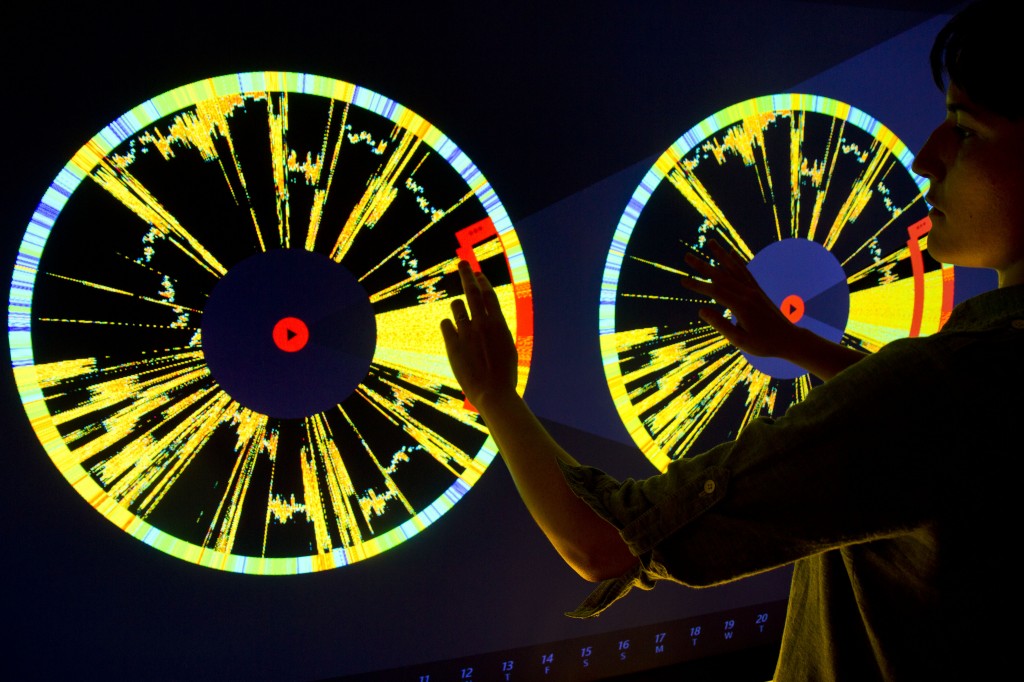The Sight and Sound of Cybercrime Office for Creative Research.
From the post:

You might not personally be in the business of identity theft, spam delivery, or distributed hacking, but there’s a decent chance that your computer is. “Botnets” are criminal networks of computers that, unbeknownst to their owners, are being put to use for any number of nefarious purposes. Across the globe, millions of PCs have been infected with software that conscripts them into one of these networks, silently transforming these machines into accomplices in illegal activities and putting their users’ information at risk.
Microsoft’s Digital Crimes Unit has been tracking and neutralizing these threats for several years. In January, DCU asked The Office for Creative Research to explore novel ways to visualize botnet activity. The result is Specimen Box, a prototype exploratory tool that allows DCU’s investigators to examine the unique profiles of various botnets, focusing on the geographic and time-based communication patterns of millions of infected machines.
Specimen Box enables investigators to study a botnet the way a naturalist might examine a specimen collected in the wild: What are its unique characteristics? How does it behave? How does it propagate itself? How is it adapting to a changing environment?
Specimen Box combines visualization and sonification capabilities in a large-screen, touch-based application. Investigators can see and hear both live activity and historical ‘imprints’ of daily patterns across a set of 15 botnets. Because every botnet has its own unique properties, the visual and sonic portraits generated by the tool offer insight into the character of each individual network.
…
Very impressive graphic capabilities with several short video clips.
Would have been more impressive if the viewer was clued in on what the researchers were attempting to discover in the videos.
One point that merits special mention:
By default, the IP addresses are sorted around the circle by the level of communication activity. The huge data set has been optimized to allow researchers to instantly re-sort the IPs by longitude or by similarity. “Longitude Sort Mode” arranges the IPs geographically from east to west, while “Similarity Sort Mode” groups together IPs that have similar activity patterns over time, allowing analysts to see which groups of machines within the botnet are behaving the same way. These similarity clusters may represent botnet control groups, research activity from universities or other institutions, or machines with unique temporal patterns such as printers.
Think of “Similarity Sort Mode” as a group subject and this starts to resemble display of topics that have been merged* according to different criteria, in response to user requests.
*By “merged” I mean displayed as though “merged” in the TMDM sense of operations on a file.